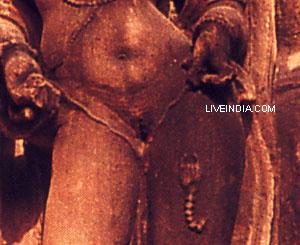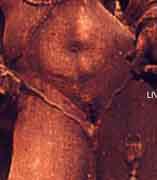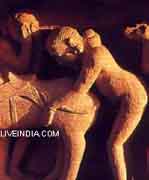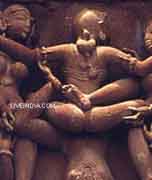 |
|
|
Introduction of Khajuraho Located in the provincial state of Madhya Pradesh India., Khajuraho
is known the world over for its temples, sex, architecture and sculpture.
Of
the 85 temples believed to have been built between the 9th and 12th centuries
only 20 have survived, many in splendid condition, others having given
way to the ravages of time and nature. Close to and around Khajuraho is
forest land; a small clearing houses a village populated by no more than
3,000 residents, but visited each year by tourists from all over the world.
Hotels, restaurants and souvenir shops mark the entrances to the two distinctive
groups of temples; little boys switch from Spanish to French to German
in rapid succession as they peddle handicrafts or mineral water; signboards,
too, are posted in various languages, and the villagers now
The
hub of tourist activity are the temples built by the Chandela Rajputs,
who can be traced as descendants of the moon god. The head of the clan
is believed to have been a valiant warrior who fought lions bare-handed
The spate of temple- building which began about the middle of the 9th century and continued until the early 12th century must have used the skills of thousands of sculptors, architects and masons; unfortunately, there is almost no record of this activity in the annals of Indian history. By the time the last temple was completed the Chandela dynasty had sunk into oblivion. Khajuraho was the Chandela capital for only a brief period; they ruled for the most part from Kalinjar and other parts of the Bundelkhand region, with Khajuraho remaining their religious center. The most important aspect of the temples is the abundance of sculptures that decorate the facades and interiors of the shrines. In this profusion of images attention has understandably been paid to divinities, less Understandably to celestial beauties and the female form in general and, controversially, to graphic sexual representations. Over
the years a number of explanations have been forthcoming for the presence
of erotic sculptures at what was essentially a religious centre; no single
theory, however, has been able to justify their profuse expression. Were
these temple centres of tantrik mysticism, which cites sex as an important
component of human development towards the Absolute or were they
merely a reactionary swing away from the austerities preached by the Buddha?
Perhaps the answer can be found as excavations in the region continue,
but this much is certain: Buddhism did at one time have a strong presence
here, just as tantric rituals enjoyed a wide adulation during the medieval
period.
|















